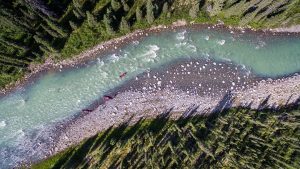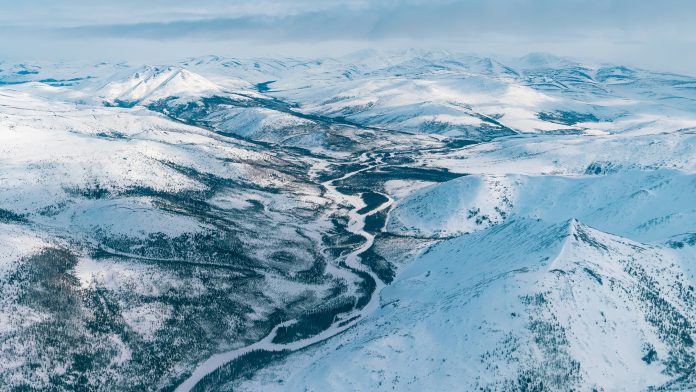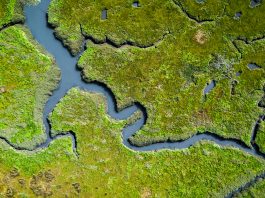An international team of researchers monitoring the effects of climate change on large rivers in Arctic Canada and Alaska discovered that the migration pace of rivers is not as predicted.
The team investigating the effects of climate change on large rivers in permafrost regions found that as temperatures rise, rivers are moving unpredictably.
“The western Arctic is one of the areas in the world experiencing the sharpest atmospheric warming due to climate change,” said Dr Alessandro Ielpi, an Assistant Professor with UBC Okanagan’s Irving K Barber Faculty of Science.
“Many northern scientists predicted the rivers would be destabilised by atmospheric warming. The understanding was that as permafrost thaws, riverbanks are weakened, and therefore northern rivers are less stable and expected to shift their channel positions at a faster pace.”
Faster channel migration has been a predicted theory for many decades, based on the potential effects of climate change.
However, this theory has not been tested with field observations until now.
The work, ‘Large sinuous rivers are slowing down in a warming Arctic,’ published in Nature Climate Change, examines the effects of climate change on Arctic rivers flowing through permafrost terrain.
Putting the faster channel migration hypothesis to the test
Dr Ielpi and the team tested the faster channel migration assumption by analysing a collection of time-lapsed satellite images – stretching back more than 50 years.
The team compared over a thousand kilometres of riverbanks from ten Arctic rivers in Alaska, the Yukon, and Northwest Territories, including major watercourses such as the Mackenzie, Porcupine, Slave, Stewart, and Yukon.
“We tested the hypothesis that large sinuous rivers in permafrost terrain are moving faster under a warming climate, and we found exactly the opposite,” said Ielpi.
“Yes, permafrost is degrading, but the influence of other environmental changes, such as greening of the Arctic, counteracts its effects. Higher temperatures and more moisture in the Arctic mean the region is greening up. Shrubs are expanding, growing thicker and taller on areas that were previously only sparsely vegetated.”
The presence of growing and robust vegetation along the riverbanks demonstrates the increasing stability of the banks.

“The dynamics of these rivers reflect the extent and impact of global climate change on sediment erosion and deposition in Arctic watersheds,” Dr Ielpi and his colleagues write in the paper.
“Understanding the behaviour of these rivers in response to environmental changes is paramount to understanding and working with the effects of climate change on Arctic regions.”
Understanding the effects of climate change by monitoring riverbank erosion
Dr Ielpi argues that monitoring riverbank erosion and channel migration around the globe can be used to understand the effects of climate change.
The researchers also analysed a dataset of rivers found in non-permafrost regions and representative of warmer climates in the Americas, Africa, and Oceania. It was found that these rivers migrated at rates consistent with results in previous studies, unlike those in the Arctic.
“We found that large sinuous rivers with various degrees of permafrost distribution in their floodplains and catchments, display instead a peculiar range in migration rates,” said Dr Ielpi.
“Surprisingly, these rivers migrate at slower rates under warming temperatures.”
The time-lapse analysis revealed that the sideways migration of large Arctic sinuous rivers has decreased by around 20% over the last half-century.
“The migration deceleration of about 20% of the documented Arctic watercourses in the last half century is an important continent-scale signal. And our methodology tells us that 20% may very well be a conservative measure,” said Dr Ielpi.
“We’re confident it can be linked to processes such as shrubification and permafrost thaw, which are in turn related to atmospheric warming.
“Scientific thinking often evolves through incremental discoveries, although great value lies in disruptive ideas that force us to look at an old problem with new eyes,” stated Dr Ielpi.
“We sincerely hope our study will encourage landscape and climate scientists elsewhere to re-evaluate other core assumptions that, upon testing, may reveal fascinating and exciting facets of our ever-changing planet.”





